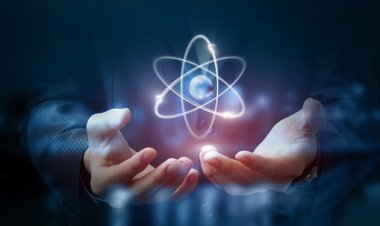Atoms are too small. They could not be seen before the invention of the scanning tunneling microscope in 1981. This is where the brief history of the atom begins.
Democrats introduce the atom
The history of the atom dates back to 450 BC. With the Greek philosopher Democrats. Democrats wondered what would happen if you cut the apple into small pieces. He thought he would reach a point where matter could not be cut into small pieces. He named these pieces Atoms. .
Democrats first proposed the atomic theory about 2,500 years ago.
Democrats were important philosophers. However, he was less influential than the Greek philosopher Aristotle, who lived almost 100 years after the Democrats. Aristotle rejected the Democrats’ idea of an atom. In fact, Aristotle thought the idea of the atom was ridiculous. Unfortunately, Aristotle’s ideas have been accepted for over 2000 years. During that time, Democrats’ views were more or less forgotten.
Everything in the world is made up of atoms, so it’s good to know something about them. Here are 10 interesting and useful atom facts.
- The atom has three parts. Protons have a positive electrical charge and are found together with neutrons (not electric charge) in the nucleus of each atom. Negatively charged electrons orbit the nucleus.
- Atoms are the smallest partical. Each element has a different number of protons. For example, one proton present in all hydrogen atom and six proton present in carbon atom. Some substances contain one type of atom (e.g., gold), while other substances are made up of atoms that form compounds (e.g., sodium chloride).
- Atoms are mostly empty space. The nucleus of an atom is very dense and contains almost the whole of each atom. Electrons contribute very little mass to the atom (it takes 1,836 electrons to equal the size of a proton) and the orbit is so far from the nucleus that each atom has 99.9% space. If the atom were the size of a playground, the nucleus would be the size of a pea. Although the nucleus is much denser than the rest of the atom, it also consists mainly of empty space
- More than 110 different types of atoms. About 92 of these are found naturally, while the rest are made in labs. The first new man-made atom was the technetium, which contained 43 protons. By adding more protons to the nucleus, new atoms can be formed.
- However, these new atoms (elements) are unstable and quickly turn into smaller atoms. In general, all we know is that a new atom was created by identifying smaller atoms from this decay.
- The atom are held together by three forces. Protons and neutrons come together through strong and weak nuclear forces. Electrically attractive electrons and protons. While an electric retreat moves the protons away from each other, the attracting atomic force is much stronger than an electric retreat. The strong force that binds protons and neutrons is 1,038 times stronger than gravity, but it works at a very short range, so the particles must be very close to each other to feel the effect. ۔
- The word “atom” comes from the Greek word “undivided” or “undivided”. The name comes from the Greek philosopher Democrats of the 5th century BC, who believed that matter consists of particles that cannot be broken down into smaller particles. For a long time, people believed that atoms were the basic “indestructible” unit of matter. Atomic elements, on the other hand, are building blocks, which can still be broken down into smaller particles. nuclear decay can break atoms into smaller atoms.
- Atoms are too small. The average atom is one-tenth of a billionth of a meter. The largest atom (cesium) is about nine times larger than the smallest atom (helium).
- Although atoms are the smallest unit of an element, they are composed of tiny particles called quarks and leptons. An electron is a lepton. Protons and neutrons consist of three quarks.
- The most common type of atom in the universe is the hydrogen atom. About 74% of the atoms in the Milky Way galaxy are hydrogen atoms.
- There are about 7 billion atoms in your body, yet you change about 98% of them every year!
